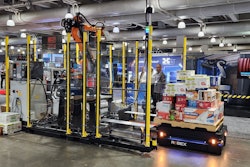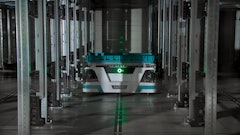
Historically, supply chain networks have acted as the practically invisible yet essential systems of transporting products into the hands of the everyday consumer. Finally, after years, the supply chain has started to get noticed. Granted, it is getting noticed in the way we would notice if garbage companies were to go on strike or if all plumbers were to suddenly disappear, but we owe it to this crucial, complex network to acknowledge and attempt to solve its current issues.
Supply chains underlie our everyday existence– enabling our Amazon Prime purchases, our last-minute grocery runs and even our back stocks of toilet paper in the office or at home. Supply chains are critical to all aspects of public well-being, determining everything from vaccine manufacturing to the prices of groceries. They contribute to global emissions through mass worldwide transportation yet reduce emissions through reverse logistics of discarded products. Supply chains are necessary in disaster preparedness and recovery, as well as support the world’s health services and individual livelihoods. These complex transportation and distribution systems are intertwined heavily throughout our daily lives.
Supply chains are ever-complex systems involving numerous factors including uncertainty, various decision-makers, global interactions and intricate webs representing the dynamics between products, money, information and people. Ph.D. candidates write entire dissertations trying to solve a supply chain’s various problems and optimize its various components. Billions of dollars are lost or gained in the global economy based on supply chain performance and efficiency. Every year, thousands of students choose to learn about and improve supply chains through the lenses of industrial engineering, business and data analytics.
As important as they are, it is also necessary to highlight how vulnerable supply chains can be, as the last two years have shown. Supply chains are vulnerable to natural disasters, transportation delays, political conflicts and geopolitical competition. The cold hard truth remains that we may not even know these supply chains are vulnerable until they are disrupted, as various companies optimize their systems independently from one another.
To demonstrate the sheer significance of efficient supply chain networks, 54% of the world’s semiconductors are made on one island. In 2019, most of the United States’s supply of IV bags and saline was produced in Puerto Rico, the distribution of which was delayed due to the effects of Hurricane Maria. Further, in 2020, most of the world’s wheat was grown in Ukraine. About 11.2% of the world’s carburetors require nickel– most of which comes from Russia. Many pharmaceutical manufacturers depend on the same small size suppliers of active pharmaceutical ingredients; however, both the buyers and the U.S. government may not be aware because the information is not shared. The United States depends on China for low-cost solar panels, telecommunication products and batteries for electric vehicles. Halloween candy supply could even be limited this October because of delayed production and supply chain concerns. Such as supply chains themselves are interconnected, so are their vulnerabilities. However, these networks are essential to critical infrastructure, including health, energy, water, food, etc.
So, what can we do to make our supply chains more resilient and able to better bounce back from disruptions? Already, several important steps have been taken, including the executive order to understand government dependency on rare earth materials, the priority for research of new materials for products and investments in manufacturing capacity close to home. These investments are long term with new ones to come as technology evolves. These changes are expansive and will take a long time to fully implement. The recent Inflation Reduction Act also builds in incentives for electric vehicles produced in and with supplies from the U.S.
We can and should do more to relieve these supply chain stresses. Perhaps we need a supply chain general in the U.S., a supply chain advisory committee to the White House and various government agencies, more supply chain experts in key advisory groups and elected roles or all of the above. We need to require greater information sharing for medical products to ensure their availability. We need to consider carbon taxes so that individual companies design their supply chains for long-term sustainability. We need to plan out supply chains for other countries in the long-term, ensuring that they too will have both production capability and access to key resources.
Supply chains are the plumbing of our society – serving a critical role, but almost invisible most of the time – except to the plumbers. Hear, hear for supply chain experts (and plumbers) everywhere!



















